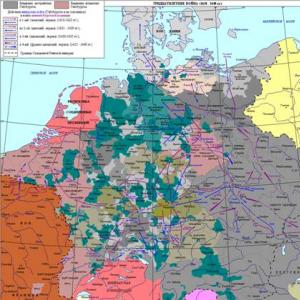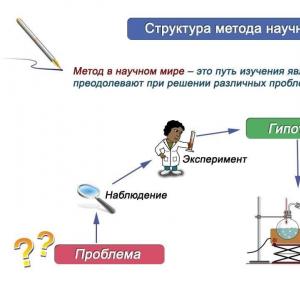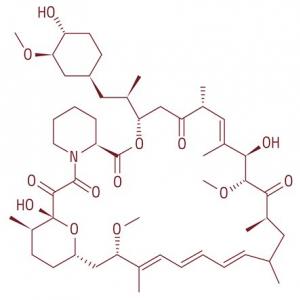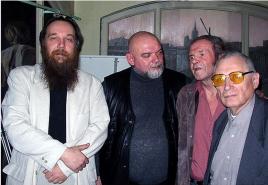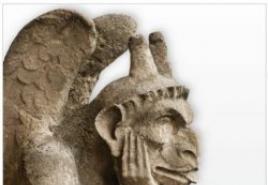XVII. Monarchic Reformation of the First Half of the XVI century
RIXDAG 1527 was carefully prepared. In 1525 - early 1527, the king and his associates created open letters caused by propaganda considerations and the desire to mitigate national discontent. Messages clarified Vasa Gustav's position relative to Lutheran verbation and refuted rumors that the king introduces a new faith.
The brightest sample of this propaganda is the letter of Gustav I to the population of Helsingland. Turning to the residents of the region, the king pointed out: a lot of "false speeches and rumors that we want to introduce a new faith and Luther's doctrine in the kingdom ..." Monarch rejected this accusation: "... We wish to support only the faith that God taught us and His Holy Apostles, and which was adhered to our ancestors." But "some monks and priests erected these accusations on us."
The main reason is as follows: clerics "created a lot of unrighteous laws in favor of their greedy and to suffering a simple people." For example, if anyone owed the clerics, they deprive him of the communion - contrary to God's law and justice. The king does not want to allow them this: let them all other good people, charge debts in Ting, by law. In the same lawlessness, the order at which the layman who shot the bird or the caustic fish on Sunday should pay for this a penalty in favor of the bishop. God did not command; These actions are violations only if someone hunted or caught fish during worship, instead of being present in the church. Also unfair that spiritual persons have legal advantages over the laceans, should be equalized. When the layer will hit the cleric, he is excommunicated from the church, and when the opposite should not be excited, although God equally, without making differences between the secular and spiritual persons, the command and other live in the world. Another injustice: if the priest died, the bishop charges inheritance in its favor - to the detriment of poor heirs. Cleary people were incentively assigned royal possessions and illegally charged royal taxes. And here the spiritual persons see that the king, fulfilling his duties and dismounting law, does not allow it to do. Therefore, they declare that the sovereign introduces a new faith and the launch of Luther. And in fact, the monarch, as already mentioned, fights their greed and lawlessness, from which the crown suffers and subjects.
Andrei Schoeglov - Reformation in Sweden - Events, Fatations, Documents
M.: SPb.: Center for Humanitarian Initiatives, 2017. - 386 p.
ISBN 978-5-98712-770-4
Andrei Scheglov - Reformation in Sweden - Events, Flows, Documents - Table of Contents
Introduction
Chapter I. Sweden on the eve of Westerossky Rixdag
- § 1. Swedish society before the Reformation
- § 2. The first steps of the Reformation
- § 3. Hans Brack and the fight against the reformation creed
- § 4. Evaluation of Brass Hans as a historical figure
- § 5. Political crisis in the middle of the 1520s.
Chapter II. Westerossky RIXDAG: Preparation, stroke, final resolution
- § 1. Preparation for Westerossky Rixdagu. Samples of propaganda king
- § 2. The composition of Rixdag and its move on documentary and narrative sources
- § 3. Westerossky Reets - Final Resolution Rixdag
- § 4. "Introduction of Reformation"? Modern controversy about Westerossky Rixdag
Chapter III. Westerosian Ordonans
- § 1. Text of Westerosian Ordonans according to the "Registry" of Gustav 1
- § 2. Socio-legal and cultural environment of Westerosian ordnants
- § 3. Establishment of Westeros Ordonans: the history of the document
Chapter IV. Documents explaining the Resolution of Westerossky Rixdag
- § 1. Letter Ricky residents of Sweden
- § 2. Comment Lavrentius Petri
Chapter V. Implementation of RIXDAG solutions
- § 1. Cathedral in Orebro and the beginning of the reforms of the Church
- § 2. Economic and administrative consequences of Rixdag
Chapter VI. The uprising of the Westie Lord
- § 1. Illumination of the uprising in the Chronicle of the Speed \u200b\u200bPeder
- § 2. The course of the uprising, the requirements of the rebels and the actions of the king according to documentary sources
- § 3. Historiographic discussion about the "rebellion of the Westie Lord"
Gayava VII. Olaus Petri: Preacher and Polemist
- § 1. Polemics on the eve of Westerossky Rixdag: District Olaus Petri and Peder Halle
- § 2. Olaus Petri and "Preaching the Words of God"
- § 3. Olaus Petri as a follower of Luther. Polemics with Powllus Elie. "Small postponed"
Chapter VIII. Reformer as a historian: "Swedish chronicle" Olaus Petri
- § 1. The role of historical works in the life and work of Olaus Petri
- § 2. Research Chronicles. Scientific assessment of the Swedish Chronicles as a historical work
- § 3. Publications and source studies
- § 4. Manuscripts "Swedish Chronicles"
- § 5. The oldest history of Sweden and the introduction of Christianity in this country by Chronicle Olaus Petri
- § 6. Olaus Petri about Sweden of the Mature and Late Middle Ages
- § 7. The ideas of the Swedish Chronicles
Conclusion
Applications. Documents Westerossky Rixdaga
List of abbreviations
Bibliography
Name pointer
Andrei Scheglov - Reformation in Sweden - Events, Fatations, Documents - Conclusion
Society on the fracture "is one of the most important topics in historical science. In this regard, events are huge importance for historians when the fate of the country was solved in a matter of days. For Sweden, one of such sign phenomena was Westerossky Rixdag 1527.
Special interest Westerossky RiXDAG is due to the fact that in Sweden there was a reformation "from above" - \u200b\u200ba peculiar and interesting phenomenon. The reform of the church was associated with political transformations, played an important role in the formation and development of the national monarchy.
In the Swedish Reformation, the early stage is allocated: 1520-E-1530s - the time of preparation of Westerossky Rixdag and the embodiment of its resolutions. The church has lost privileges, was taxed by tax, its land was rejected in favor of the crown and nobility. Reformation creed received official recognition, at the clergy cathedrals (the end of the 1520-Kh-1530s) adopted decisions on divine transformations. The efforts of the leaders of the Reformation - Olaus Petri and Lavrentius Andree - religious literature on Swedish was created and published.
In Chapter I, it was shown that on the eve of the Reformation, the fight against the Swedes against the Danish monarchy turned into a movement for the state independence of Sweden. In the early 1520s. The struggle against the Danish rule was headed by Gustav Ericsson (Vasa). The beginning of the liberation war against Danes went successfully for the Swedes. Danish monarch Christian II was overthrown from the Swedish throne. Gustav Vasu was announced by the king in Strachnes in June 1523, which marked the end of the squid ulya.
Thus, at the beginning of the 1520s. Sweden finally left the Unce and achieved independence. The country has developed prerequisites for the formation of a centralized state with a strong royal power.
To this state was required by the National Church, independent of the papal authorities. It is the reformers, as noted above, a church that meets new religious aspirations took to create.
Further, in the monograph, it was shown that several years before the specified events in Sweden began to penetrate the teaching of Luther. There are data on the start of cooperation of Gustav Wasi with reformers - Olaus Petri and Lavrentius Andree. Sources make it possible to conclude that from the autumn of 1523 the monarch began to pursue a policy, largely based on the ideas of Luther, and began to sympathize with reformer clerics. At the same time, around the middle of 1523, there were also those social forces on which Gustav Vasa could rely. These were the faithful king of nobles, cities and their burgherness, part of the clergy.
In the events related to the struggle around Lutheran ideas in Sweden, one of the central characters was Hans Brack. Around 1523, the bishop began antirection propaganda. In particular, he argued that the reform treachery is based on the "delusions of Russians", i.e. Orthodox faith. The consequence of Brack's position was a conflict with Gustav Vaoy. The confrontation was largely provoked by the king, which put forward the demands of the creation with the interests of Braska and with the privileges of the Church.
Obviously, the sovereign involved in the principal dispute, being an armed new, reformation ideology; Although partly the collision was a traditional medieval character, the participants referred to the ancient documents and privileges.
The king took consistent steps towards church reform. What was the position of the monarch in relation to the creed, a number of documents are evidenced, especially - a letter to Gustav I one of the Royal Governors: "... We have one of the way: to support the evangelical doctrine and caraa those who do not want to follow the Word of God ... " At the same time, the king created a significant precedent, swelling the castle from the Cartesian monastery, previously donated by the regent with a wall of the sture younger. In an effort to put the limit of the antlyuterian propaganda of Braska, the king forbade the hierarch to translate and publish writings directed against Luther.
In a book based on the analysis of the arch of unique (including handwritten) sources, the early stage of the Reformation in Sweden (1520-E-1530s) was investigated in detail in domestic historiography (1520-E-1530s), the relationship between the transformations of the Church and the increase in the royal power Conducted Gustav Vasa (1523-1560). Particular attention is paid to the key event of the Swedish Reformation - Westerosky Ricky Ricky 1527: His move and results are considered, the consequences are shown (the reduction of church property, confessional reforms, changes in the field of law). The scientific discussion on Westerosky Rixdag, and also studied the documents created in connection with the Reformation. The central place in the book is devoted to the study of the life and works of the spiritual leader of Swedish reformers - Olaus Petri. A detailed analysis of his theological and historical views is presented, the results of the activity as an educator are considered, the circle of sources, composition and the main ideas of fundamental ...
Read completelyIn a book based on the analysis of the arch of unique (including handwritten) sources, the early stage of the Reformation in Sweden (1520-E-1530s) was investigated in detail in domestic historiography (1520-E-1530s), the relationship between the transformations of the Church and the increase in the royal power Conducted Gustav Vasa (1523-1560). Particular attention is paid to the key event of the Swedish Reformation - Westerosky Ricky Ricky 1527: His move and results are considered, the consequences are shown (the reduction of church property, confessional reforms, changes in the field of law). The scientific discussion on Westerosky Rixdag, and also studied the documents created in connection with the Reformation. The central place in the book is devoted to the study of the life and works of the spiritual leader of Swedish reformers - Olaus Petri. A detailed analysis of his theological and historical views is presented, the results of the activity as an educator are considered, a circle of sources, composition and the main ideas of the fundamental essay of the thinker are considered, "Swedish Chronicles".
The book is addressed to the media and scandinavist historians, as well as political scientists, religions, cultivologists; Labor will be interesting to a wide reader trying to comprehend the phenomenon of European Reformation.
Reformation in Sweden
/94/ Reformation in Sweden was not a folk motion. This was explained by two reasons: the political ambitions of Gustav Vase and the influence of various movements in Germany, usually united by the concept of "Reformation".
In Sweden, the influence of the reform ideas of Martin Luther (1483-1546) and Philip Melanchton (1497-1560) were dominated.
From the point of view of theology, Lutero-melanchton reformation was an innovation, "cleared" ideas that were discussed during the middle and late Middle Ages. The reformers were reactionary (i.e., they were fixed backwards) in the sense of the search for the ideal of church life in the distant past (Antiquitas). The Bible, the "pure word of God" became the most important norm.
The beginning of those changes that led to the Reformation in Sweden was laid by RIXDAG solutions in Westerosa in 1527. On it, there are such reformers as Laurentius Andre and Olaus Petri (1493-1552), they received permission to freely preach their ideas, and Gustav Vaz could now begin the confiscation of church property. This led to a rapid reaction, for example, to uprisings in the Darrna of 1524-33, in Smolande in 1529 and the uprising under the leadership of Niels Dakka in 1542-43.
Laurentius Petri (Brother Olaus. - Note. Translate) (1499-1572) was elected Archbishop in 1531. Dedication to the san and other bishops meant that the places of the hierarchs of the church began to occupy supporters of reformists. Contrary to the attempts of the king to fully control the activities of the church, it retained the medieval structure of the bishopath. This guaranteed the church a certain independence. Some changes also persisted Mass and the order of worship. The church of the late Middle Ages was a rather tolerant iconic community. The situation gradually changed during the reformation period with its requirement of "pure teachings". Monasteries abolished, fraternity, pilgrimage, as well as individual church rituals service forbidden. Various forms of worships that existed earlier were gradually unified.
In accordance with the noted above, characteristic of reforming the principle of appeal to primary sources in 1526, the new covenant was translated into the Swedish language, and in 1541 - completely the entire Bible was transferred to the national language. During the years of the Reformation, the requirement that the central place in parish life was taken by the sermon. Its fulfillment was now facilitated by the fact that the reaches could preach in their native language. Through the preaching of believers were to perceive the "pure word of God". The essence was to free the worship service from everything that contradicted the main principle of the Reformation: "Salvation by one grace of God." /95/
The next period of the Reformation came with the arrival in 1569 to power of Yuhan III (1537-92). His Church Policy program joined the idea of \u200b\u200binternational church unity with the desire, so that the old church becomes a model of church life. As a result, a printed church order of 1571, released called Nova Ordinantia.in 1575. A year later, Yuhan published a large liturgical order, Liturgia Suecanae Ecclesiae,named "Red Book". He tried to restore the system of higher education destroyed during the reformation and establish relations with Rome. It met the opposition and served the beginning of the so-called liturgical struggle (1576-93). At the head of the resistance, Yukhan's brother - Karl, Duke Södermanland, who was sympathetic to Calvinists, who later became King Carl IX.
Duke Karl used the political situation to strengthen his power. A step in addition to this was convened in 1593 the church cathedral in Uppsal, the purpose of which was the abolition of the church reforms of Yuhan. ORDONANS 1571 and CONFESSIO AUGUSTANA (Augsburg confession), German confession of 1530 were officially accepted as the norms of church life. Thus, the orthodox luteran tricks were fully restored, the Swedish state church accepted the form preserved to the present.
Sven-Eric Berdd
Topic: "Reformation in Sweden".
Sweden Conducting the Reformation refers to 1527-1544. In contrast to Norway and Iceland, the highest Catholic clergy sought to do with the Danish king here, and supporters of the Reformation actively participated in the struggle for the independence of the country.
Sweden at the beginning of the XVI century. He was a country with backward agriculture and a minor urban population. The only sectors of the Swedish industry, which also had international significance, were mining and metallurgy. All the peasants were personally free, and the majority of most of them are pretty moderate. Positional and regulations were mainly charged in the form of supplies of grain, oil, livestock, iron, forests. Weekly Barshina carried only those holders who lived near the Lords of the Company, but there were few such farms and they had small sizes. Vital importance for Swedish, as well as for Danish, peasants had a rural community with its forced routine of field work, sharing forests and pastures and even sometimes with redistribution. In the XVI century In Sweden, the remains of the natural economy remained. Part of the royal officials received a salary in kind. Even in the XVII century. Domestic trade often wore a natural exchange. However, already in the XVI-XVII centuries. Swedish merchants, mainly Stockholm, the sole significant city in the country. Large biders increasingly penetrated the mining and metallurgy, economically subordinate small manufacturers. From the end of the XVI century. Foreign, especially Dutch, merchants began to buy oil from the Swedish peasants and noble oil, cattle, raw iron and other goods.
Back at the turn of the XV - XVI centuries. The Swedes in bloody wars had to reflect the persistent attempts of the Danish kings to restore the calm of Denmark with Sweden. The last time such an attempt was fortunate in 1518-1520. Danish king Christian II, severely dealt with his opponents from among the Swedish nobility and citizens (CSTOGGOLM BLOOD BABU "1520). However, terror just extended Danish domination. The peasant uprising against foreign enslavers began in 1521, put forward by the leader of Gustav Eriksson and quickly spread to the whole country. In August of the same year, the ruler of Sweden was elected in Vadsten Gustav. To speed up the achievement of victory, in 1522 he entered into negotiations with another opponent Denmark - the largest Hanseatic city of Lomek. Luxury government interested in crushing Christian II, who attracted to the Baltic domination, entered into a union with Sweden. Strong Lubek Fleet moved to the Danish straits. Christian was forced to engage in the protection of his own country and could not have a serious help with his troops and supporters in Sweden. By the end of 1522, almost all of Sweden was liberated from Danes, held only three major sea fortresses - Stockholm, Kalmar and Elvesborg. In the spring of 1523, the Danish king, weakened by failures in Sweden, was overthrown by large feudalities in Denmark itself, and fled to Holland.
In June 1523, Swedish RiXdag in Strachnesse declared Christian II deployed, and hated Ulya with Denmark - terminated. Sweden again gained independence. On June 6, 1523, Rixdag elected the head of state - the king - the head of the national movement, the ruler of the country of Gustav Ericsson under the name of Gustav I Vase.
The first years of the existence of a young state took place in difficult conditions of the incessant internal struggle. The disadvantage of funds - Lubeck has all more persistently demanded the payment of debt, the money was needed for the maintenance of troops and other state needs. In this situation, Gustav Vaza found the only right way to solve the crowned problems - the path that allowed him to get, the solid support of the main social forces of the country. Gustav began the reform of the Church and for this purpose in 1527 again convened RIXDAG in Westeros, which played an important role in strengthening the Swedish national state.
By this time, the Universal Catholic Church became a brake on the way of education of centralized national states, in particular in Sweden. Catholic bishops and monasteries belonged large land ownership, in fact not subject to the Swedish government; In the possessions of the "Princes of the Church" - the powerful walls of the bishop castles were raised, there was their military force - the detachments of armed vassals and mercenaries. Swedish prelas have long supported the Danish power, enhancing a sharp conflict with the main estates of Sweden, which strongly undermined the prestige of the Catholic Church in the country.
The importance of the Catholic Church in the Swedish political life of the XV - early XVI century. determined by its economic power. By donation, testaments, shopping in the hands of church feudalists, many lands of Swedish nobles were passed. By the time of elimination of the squid, the Church became the largest landowner in the country, possessing the same amount of land as the entire Swedish nobility as a whole.
In churches and monasteries, major movable values \u200b\u200bwere gradually focused - gold and silver utensils, expensive icons, silver statues of saints, etc. Thus, the big funds gathered from the population were withdrawn from the appeal, the government constantly felt the acute lack of their lack.
Having engulfed clergy in the XV - early XVI century. The desire for enrichment contributed to the fall of the authority of the Catholic Church in the wide layers of the population. The worship service that was fulfilled in Latin was incomprehensible, so the ideological influence of the church service for the masses was small.
In the reform of the church in Sweden was interested, first of all, the nobility. It wanted to get the land, accumulated in the hands of the church, especially over the past decades in the possession of monasteries. The urban class was interested in creating a "cheap" church, not seeking to enrich and not burdening the population. And even the advanced part of the clergy, seen the decline of the Catholic Church, wanted to "clean" the church from its vices, refuse to accumulate property, to focus all their activities on the fulfillment of a purely spiritual mission.
As you know, the struggle for the reform of the Catholic Church has unfolded from the 10th of the XVI century. In Germany, where in 1517 in Wittenberg University opened openly with a call to the reformation Martin Luther. In the same place, in Wittenberg, a young Swede Olaus Petri studied (1493-1552), who became a zealous follower of a new teaching. Returning to his homeland, he became the first preacher of Lutherancy in Sweden. Other priests in different places of Sweden followed him.
The weakening of the positions of the Catholic Church after 1523 facilitated the preaching of the Reformation. Olaus Petri, his brother of Petri, Lavrentin, Lavrenty And Reee and their students vigorously preached Lutheranism. The king patronized their activities: Olaus Petri was translated into Stockholm and appointed a "urban scribe" (secretary of the city government), and in the main metropolitan council he was provided with a preaching department. Thanks to the activities of Olaus Petri and his followers, Lutheranism quickly spread in the circles of the capital's burgherness. In accordance with the teachings of Luther, the service in Stockholm churches from 1525 began to be conducted in Swedish. Parishioners understood the entire course of worship and actively participated in him reading the prayers and singing of Psalms. In 1526, a transfer to the Swedish of the Gospel was completed; In the same year it was published.
In the meantime, Swedish Catholic prelas continued to fight against the victory of the progressive forces of the country. The prominent church figures participated in the organization of anti-governmental unrest in Dalearlia in 1524-1525 and in 1527. In the created situation, the Catholic Church became the main reactionary force that prevented the further strengthening of the Swedish state.
In 1527, Gustav Vaza openly began to hold the reform of the church on top of the means of state power. It was the "royal reformation." In Rixdag, 1527, in Westerosa, the king was able to achieve the support of the highest estate of the country - nobility, putting the question of the secularization of church lands. The political line of the king was supported by the estates of citizens and peasants. RIXDAG issued a resolution: to take away the castles from the bishops, to limit the number of their servants, transferring to the king "excess" the income of the bishops, Cathedral churches and monasteries, to provide nobles with the right to return the land earlier, for the previous three-quarters of the century to hold the spiritual feudal.
The ownership of the church actually passed under the control of the crown, and most of the church decade began to flow into the treasury. After some time, the bishops, being unable to collect from the remnants of his possessions the required amount of taxes in the treasury, were forced to voluntarily refuse to benefit the state from their lands. Monastic lands suffered the same fate. By the middle of the XVI century. Church feudal land tenure was liquidated. Without this source of income, the Swedish monasteries were gradually closed, the monks went to the "World". The movable property of monasteries and bishops - money, gold and silver utensils - was taken in the treasury. With the implementation of these decrees in Sweden, semi-autonomous church possessions were eliminated and the base for the independent role of the Church in Sweden was completely destroyed.
The head of the Swedish church was declared the king. In all churches of Sweden, Latin worship was replaced by a local language service. The former Catholic cult with its magnificent medieval theatricality was replaced by a strict Lutheran cult, in which the main attention was directed not to external forms, not on the mechanical implementation of rites, but on the internal ideological content of religious actions. In simplified worship, the main place was taken by the sermon, joint reading of church books and singing of Psalms. The cult of saints was abolished, and with him and revere the relics, icons and sacred statues, numerous religious holidays. The internal device and the decoration of churches were strongly simplified, from which icons, statues and artistic carving were almost completely removed. Posts and most of the so-called sacraments were canceled.
Indigenous changes occur in the clergy. A complex church hierarchy has disappeared with the abolition of monastics, including the bishopath, which was replenished from the monastic environment. Catholic priests dedicated to San Bishops and possessing supposedly special "grace" transmitting bishops from the Pope itself, from now on, the pastors were replaced - preachers elected by parishioners. After eliminating the bishopata, secular officials appointed by the king were managed by the Church. He was canceled and vows celibacy for the clergy. Lutheranism is announced by the official religion of Sweden, to confess the Catholic religion forbidden; Lutheranism was as intolerable to other creeds, as well as Catholicism.
The reformation was important and ambiguous for the development of Swedish culture. Replacing the Latin language in church cult Swedish accelerated the development of national writing and literature. At the same time, the effect of the reformation was not only positive. Many church and monastic schools were closed, medieval manuscripts were destroyed. This led to a decline in school education. The refusal of the cult of saints, from the reverence of the relics and icons entailed the extermination of the numerous monuments of medieval painting and applied arts accumulated in the churches.
The main political outcome of the Reformation was the strengthening of the state. By destroying the political independence and economic power of the Church, Gustav Vaz turned the Swedish church from the rival of royal power in a solid support and a reliable minister of this power. Along with the strengthening of the social support of the monarchy (land nobility and the top of the city burgherness), the reformation contributed to the decision and the most acute problem that stood before the Swedish government in the first years after the overthrow of the Danish authorities is to replenish the treasury. The government paid off with debts and came out of the financial crisis. Later, the state of the state has passed a significant part of the land of church feudalists, which has significantly increased the richness of the treasury; Over time, the government appropriated and the right to collect a magnitude tax in favor of the Church - tithing, leaving her two thirds.
The successor of Gustav Vase Eric XIV strengthened the Swedish centralized monarchy. From the middle of the XVI century. Sweden included in the struggle for domination in the Baltic Sea. At this time, the cargo turnover at the Baltic grew from year to year. The economic prevalence in this area of \u200b\u200bEurope passed from the drains of Hanseatic cities to the Dutch. Military domination laid tightly in his hands Denmark, who owned both shores Zunda and the most important islands of the Baltic. Under these conditions, the views of the Swedish kings and the nobility appealed to the most accessible and at the same time rich in the lands of the Livonian Order of the Livonian Order in Eastern Baltic. The possession of Levonia is one of the residents of Europe - it was valuable not only in itself. In Riga, River and Narva, trading paths from the East, from Russia and Lithuania, from the distant Asian countries. The traditions of the robbed "eastern trips" were alive among the descendants of the Swedish Vikings and Crusaders. Gustav Vaza has already tried shortly before his death (in 1554) to resume aggression against the Russian state in Karelia, but unsuccessfully. The successes of Ivan the Terrible in the Livonian war alarmed the Swedes as well as other Western neighbors of Russia. The king of Eric XIV did not slow down to capture the part of the Livonian land. In 1561, the Swedes seized the roar (Tallinn) and the northern part of Estonia. Seven-year war 1563-1570. He was held between Denmark and Sweden to a large extent due to the one in whose hands will be the Baltic trade with the Russian state. Swedish feudal motors sought to prevent the approval of the stronger Russian state on the shores of the Baltic. This found his expression in three Russian-Swedish wars - from 1570 to 1535 in the XVI century., However, the Swedes still failed to push the Russian state from the Gulf of Finland.
During the Livonian War, the Military Political Union of Sweden and Commonwealth Speech was created, directed by its edge against Russia. With the Swedish King of John III (1568-1592) in Sweden, the influence of Polish culture and Catholicism was noticeable. Swedish worship has become acquired by Catholic traits. The rapprochement of both states was manifested in the conclusion of dynastic marriages. Since 1592, Sweden and Poland turned out to be a connected personal unia: the pupil of Jesuit Sigismund III was simultaneously king of Sweden and Poland. For Sweden, the threat of Catholic counterrevision and the subordination of the responding speech has arisen.
The nationally colored anti-catalytic movement of a small nobility, citizens and the mass of the feed peasants headed the younger son of Gustav Vase, Duke Karl. Sigismund was expelled in 1599, and the feudal aristocracy, to which he relied, was subjected to harsh harassment.
The involvement of the northern countries to international trade, accelerated from the end of the XVI century. The pan-European increase in prices for agriculture and mining industry, led to Sweden as in a number of Eastern and Central Europe countries, to strengthen the feudal oppression. During the Baltic foreign trade, the noblemen achieved for themselves in 1612 and 1644. Widespread privileges (the right of duty-free trade, policeman over his peasants, etc.). With Gustaba II Adolf (1611-1632) and especially with Queen Christine (1632-1654), sales, mortgage and distribution of nobility on different conditions of corona and especially supply lands were widely unfolded. The dependence on the crown now changed to the mass of the peasants by their dependence on individual nobles. Swedish feudalism lost its "original" traits of incompleteness.
Not only the form, but also the degree of feudal dependence. The number and size of noble estates grew. The nobles have achieved an increase in all types of rent, and most importantly, the transfer of their new peasants on the barbarian and in every way tried to deprive the former feed peasants of their vintage rights to the ground, to drive them from a comfortable land, to assign community land. Over the peasants hung the threat of serfdom.
The growth of peasant performances in the 30s-50s of the XVII century. Appeared to the feudal pressure, as well as on recruit sets and new taxes. A number of circumstances prevented the spread of serfdom in Sweden. For the triumph of serfdom, there was no sufficient economic basis here, since large agricultural production on sales had limited sizes. The presence of four rixdag and system of local courts with the participation of peasants also gave the last opportunity to remove feudal. In addition, the noble expansion caused discontent and the Swedish citizens. Fraging the people's uprising in Grozny for European monarchs, the years of the English revolution, believing with the unanimous protest of the elite estate presented in Rixdag, the Government of Queen Christina in 1650-1652. Requirmed the inviolability of personal freedom and the rights of the peasants to the ground, somewhat limited the further growth of duties. Despite this, the distribution of land nobility even intensified, and peasant unrest in the provinces of Smoland and Narki in 1652-1653. were brutally suppressed.
The whole first quarter of the XVII century. Filled with the struggle of Sweden and Poland because of the Eastern Baltic States. The doctor was exacerbated by the dynastic claims of Sigismund on the Swedish throne.
In the course of this struggle under the guise of "help", the Russian Tsar Vasily Shuvedk, the Swedish intervention in Russia began (1609). Civil plans for Russia were maintained primarily large feudal magnates, such as Yakov Dugadi, who dreamed of expanding their serfacetic farms and multiplying income. The liberation struggle of the Russian masses forced the Swedish king Gustav II Adolf to escape from the captured Novgorod and refuse his claims into Russian throne. However, using the temporary weakening of Russia, the Swedes held a part of the Russian territory for a long time (in the Stolban World of 1617). They inflicted sensitive blows on the speech by compolonged, capturing her in the 20s of the XVII century. Riga, all the liflandia and Prussian ports, primarily Pillau - the sea port of Königsberg.
The desire of Swedish nobles and merchants to domination in the Baltic Sea and its southern shores, along with the threat of Catholic counterformation, led in 1630 to join Sweden to the thirty-year-old war.
Strengthening the international role of Sweden was enshrined by the Westphalian world of 1648, according to the terms of which she received all Western Pomerania, part of the eastern, city of Shttin (Szczecin) and some other territories. In Europe, a new Great Power was formed, having acquainted with their possessions almost all the Baltic. Swedish domination in the Baltic States and Northern Germany from the very beginning fell a heavy burden on the shoulders of the Baltic peoples, primarily Latvian, Estonian, German and Russian peasants. Swedish nobles donkeys in Baron castles of Liflandia and Estland. Swedish customs officials who have passed the bourgeois Dutch school, intercepted a significant share of profits from the trade of Western Europe from East.
Great-Califle Malconed and, in many respects, even behind Sweden, it became possible due to the weakening in the first decades of the XVII century. Such neighbors of Sweden as Commonwealth and Russia speech, as well as thanks to the war in Germany. These circumstances, combined with the strategic vulnerability of the Swedish "Baltic Empire", with the complete lack of common interests among the peoples and the small number of the most dominant nation, the Swedes predetermined her short-life.
Full of politicic factor (Schotlandskі Lordi Schollya Pіdtrimouvnushnaya Anglia Protestantism Nad_yassed himself poses the French fourth) reformitsky. 2.5 Specialty of reformation in N_Terlands Basic preformed reformsії in N_Terlands visited, Yak І in the innovatives of є substitutional krasniki, the owner of the social and econichny, politician, cultural zmіn zhuchnya
He continued to adhere to the doctrine of the presence of Christ in the sacrament of the Eucharist. As a result, sophisticated rituals and solemn robes can often be seen in modern Lutheran churches. In many European countries, the Reformation was headed by Princes, Duke, Kings, who carried out her in their own interests. Here, the Reformation, as a rule, was successful and contributed to strengthening the authorities of the rulers. Lutheran ...
Dutch. It is not surprising that Italian artists and French architects, German theologians and Dutch scientists left an indelible mark in the spiritual life of the Scandinavian peoples of the XVI - XVII centuries. Culture of Denmark in culturally, the championship among the Scandinavian countries is undoubtedly belonged to Denmark. The founding of the University in Copenhagen in 1478 and the introduction of a typography in Denmark in 1482 ...




Relіigіu (Protestantism ABO Catholic) for your princes on the abundance of Roses, Zgіdima Principle: "Chia Vlad, that І Vіra" (Lat. Cuius Regio, Eius Religio). Prothe to the cigarette of the XVII table of Catholitzka Church Spirals on the pіdtimka dinіstії Gabsbugіv Vіdddovaoval Sviy Pvt Ditch I was active in Worotbu Protestantіv. For Vіdsіchі Catholitsky, Protestantsky Prince of Sacred Rimskoї Іmper ...
|
Series: "Mediaevalia" In a book based on the analysis of the arch of unique (including handwritten) sources, the early stage of the Reformation in Sweden (1520-E-1530s) was investigated in detail in domestic historiography (1520-E-1530s), the relationship between the transformations of the Church and the increase in the Royal Power, which Conducted Gustav Vasa (1523-1560). Particularly consistent with the key event of the Swedish Reformation - Westerossky Rixdague 1527: His move and results are considered, the consequences are shown (the reduction of church property, confessional reforms, changes in the field of law). The scientific discussion on Westerosky Rixdag, and also studied the documents created in connection with the Reformation. The central place in the book is devoted to the study of the life and works of the spiritual leader of Swedish reformers - Olaus Petri. A detailed analysis of his theological and historical views is presented, the results of the activity as an educator are considered, a circle of sources, composition and the main ideas of the fundamental essay of the thinker are considered, "Swedish Chronicles". The book is addressed to the media and scandinavist historians, as well as political scientists, religions, cultivologists; Labor will be interesting to a wide reader trying to comprehend the phenomenon of European Reformation. Publisher: "Center for Humanitarian Initiatives" (2017)
ISBN: 978-5-98712-770-4 In Labyrinte |
Other books similar subjects:
See also in other dictionaries:
95 Abstracts Consent Council Council ... Wikipedia
Reformation Reformation 95 of theses of the formula of consent Counterfeiting Movement and Denominations Protestantism Reformation in Germany Lutheranism Anabaptism ... Wikipedia
- (Lat. Germania, from the Germans, it. Deutschland, literally the country of Germans, from Deutsche German and Land Country) State in Europe (with the capital in Berlin), which existed until the end of World War II 1939 45. I. Historical essay ... Great Soviet Encyclopedia
Federal Republic of Germany (Germany), state in the center. Europe. Germany (Germania) as the territory populated by the GRUM, tribes, is first mentioned by the peef of the mass in the IV century. BC e. Later, Germany's name was used to indicate Rome. ... ... Geographic Encyclopedia - [Officer. Name Societas Jesu (SJ), about Jesus], Catholic. Order of the monastic of regular (statutory) clerics, founded in 1534 Catholic. sv. Ignatius Loiol and the approved 27 Saint. 1540. Pope of Roman Paul III Bullah "REGIMINI ... ... ... Orthodox encyclopedia

